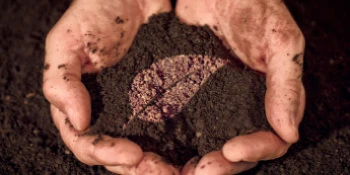
In order to help the plants in your yard thrive and look their best, it is necessary to ensure they receive adequate amounts of light and water, but the essential ingredient that is often overlooked is soil. In most cases, soil requires some type of amendment in order to provide the ideal conditions for growth. With a little help from The Grounds Guys® you can learn how to amend soil and give your plants everything they need. Here are some tips to help your landscape look its best all year round while elevating your home's curb appeal and adding value to your property and lifestyle.
Looking for a visual example of what we're talking about? Click here to launch our helpful YouTube video!
The Importance of Soil Analysis
The first step toward a more balanced outdoor environment is professional soil testing, which can help to determine the exact composition and nutrient levels in your soil. Once you have identified any deficiencies, you can develop a plan to amend the soil to suit your needs based on the following:
Nutrients
There are 17 different nutrients needed at various ratios for general plant health. Nitrogen (N), Phosphorus (P), and Potassium (K) are the three key nutrients needed by all plants and found in most fertilizers.
pH Levels
pH is measured on a scale between 1.0 and 14.0, with the median ranking of 7.0 being considered a neutral pH level. Neither extreme is desirable in most cases, as plants tend to prefer levels that range between 6.0 and 7.5. The lower the number, the more acidic the soil (preferred by blueberries and azaleas), while numbers that are increasingly higher than 7.0 indicate higher alkalinity (preferred by ferns and geraniums).
Texture
Dependent on your geographic location your soil may be mixed with sand, clay, limestone or manufactured dirt. Soil that is too sandy or too dense can hinder water absorption or drainage. While most soil can be categorized as somewhere in between, the ideal texture should be light enough to allow the passage of water and air, with enough density to provide adequate moisture and nutrients to your plants.
Tips for Soil Amendment
Once the analysis is complete, you can begin taking steps toward improving the quality of your soil. This consists of breaking up the ground before working in the necessary materials. Whether you need tips on how to amend soil for vegetable gardening or how to amend clay soil, the following information can help you to succeed:
Add Nutrients
Organic matter or inorganic fertilizer can be added to soil that is lacking the essential nutrients. The right commercial fertilizer can produce fast results, but the downside is the cost and the long term, negative effects it can have on your plants and soil. Organic materials such as compost, lawn clippings, bone meal, or peat moss are a much safer alternative and better for the environment.
Adjust the pH Level
Soil that is too alkaline may benefit from the addition of elemental sulfur or coffee grounds, while soil that is too acidic can be balanced by adding lime, wood ash, or poultry manure. Amend the soil in stages, adding no more than five pounds of lime or sulfur for every 100 square feet of space.
Amend the Soil Texture
If you are wondering how to amend clay soil for grass, peat moss is a great addition that is both inexpensive and effective. Compost can be used to enrich sandy soil while adding much-needed structure and stability.
Professional Soil & Garden Bed Maintenance from The Grounds Guys
Contact the experts at The Grounds Guys today for all your commercial and residential landscaping needs, including soil amendment and garden bed maintenance. Find The Grounds Guys location nearest you to request a free estimate today!